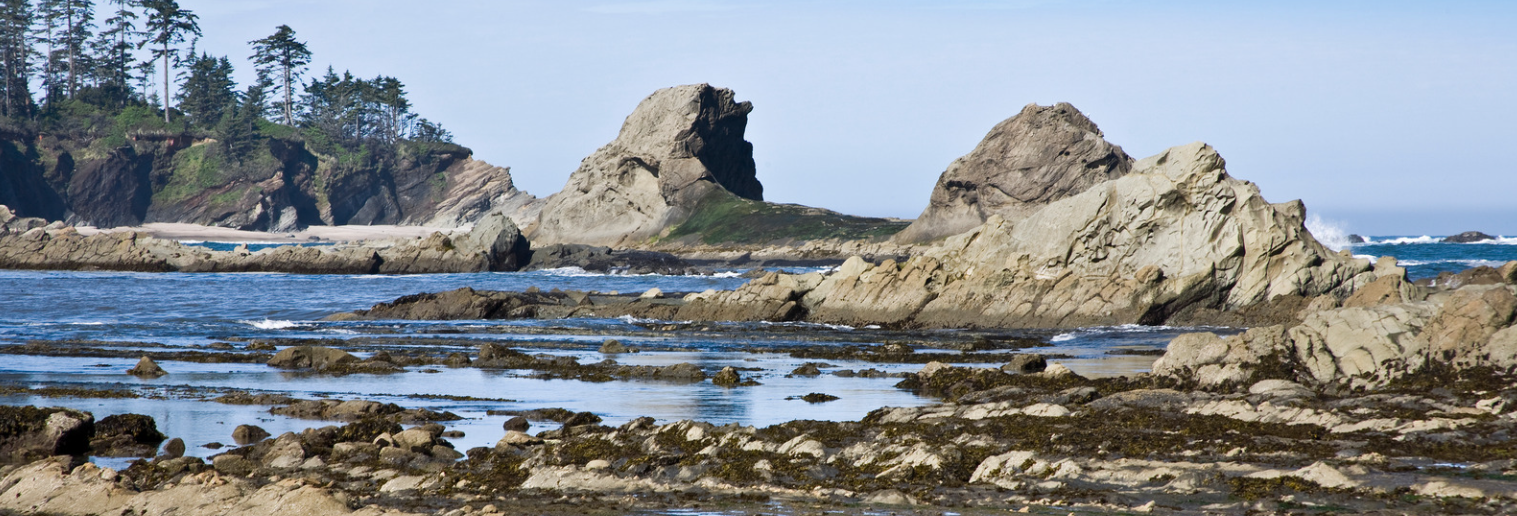
Another early morning in Charleston, Oregon waking up at 5 am to the sounds of birds chirping and the fresh breeze of coastal air. The only thing missing was the hot homemade breakfast at the OIMB cafeteria. However, we managed to snag some bagels with cream cheese, breakfast bars, oranges, and fruit snacks before hitting the road. Once we arrived at the field site we planned to explore, Middle Cove of Cape Arago, Dr. Lord said that the rain from that night washed out the trail, and it would be like a slip and slide trying to make it down. So he decided to take a quick detour out to Sunset Bay.
After arriving, we checked out the scenic field site and slipped into our waders; thankfully, they were dry. The biggest challenge was probably our slow but persistent attempt to get across the seaweed-covered rocks with anemones, sea urchins, snails, and chitons in every rocky crevice, which made great pictures. Finally, after lots of careful and calculated maneuvers, there was a flat area to walk around and observe all the tidepools, mussel beds, and anything else we saw that looked interesting or new. Slowly wondering the whole site, I stumbled upon one of the largest groups of purple sea urchins I’ve ever seen. Then Dr. Lord and other group members found a gumboot chiton, red and hybrid sea urchins, sea slugs, crabs, and tiny fish that moved too quickly to catch.

We were all having a great time searching the corners and crevices of the tidepools and rocks to find anything new to bring back to the classroom. We left with three full Ziploc bags of fascinating marine life, but one of the baggies was leaking out the water inside on our way back. It turns out that Ziploc bags are not meant to hold sea urchins. The trip back across the slippery rocks was easier to maneuver the second time around, and thankfully nobody slipped. By the time we got back and loaded up our waders and new marine friends into the van, the lack of 8 hours of sleep caught up to me, but our job was not done yet. We made our way back to the classroom to put the animals away safe and secured so they would not escape. The rest of the day was dedicated to finishing our class field guide of all the animals we had caught so far and working with our group on research proposals and pilot experiments. This was just another exciting and eventful day in Charleston, Oregon. I’m glad to have this opportunity to be with such a great group of people learning new things about marine life that I wouldn’t get to see living in Pennsylvania.